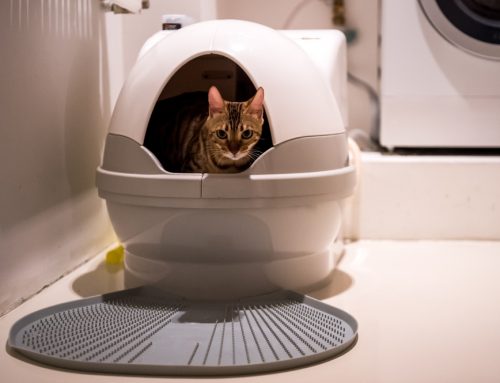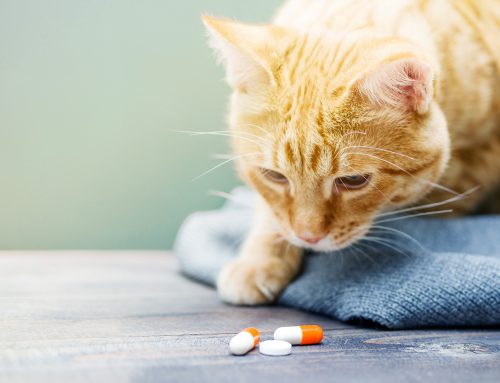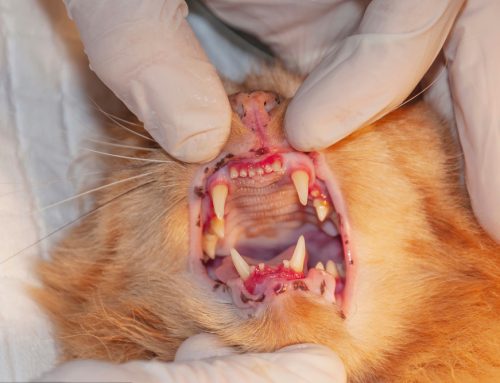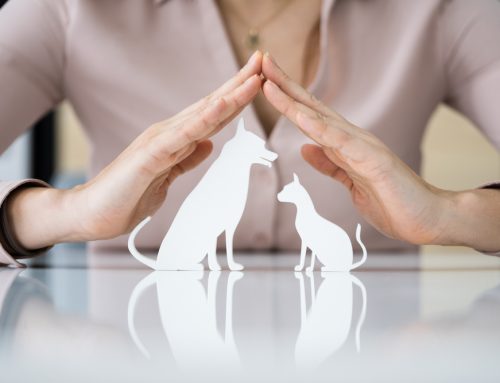Patellar luxation (i.e., trick knee, slipped knees, or floating kneecaps) is one of pets’ most common orthopedic conditions. Without proper management, additional complications and knee (i.e., stifle) injury can occur, including cranial cruciate ligament rupture (CCLR). If your dog or cat develops a skip in their step or has recently been diagnosed with patellar luxation, read our Best Friends Veterinary Care team’s guide to this progressive condition.
Patella what? Pet knee biomechanics made simple
Your pet’s patella (i.e., kneecap) is a small bone tucked inside a tendon connecting the large thigh muscles to the tibia (i.e., lower leg bone). The patella—and the bone’s surrounding tendon—ride in a groove along the top of the femur (i.e., thigh bone), moving slightly as the knee joint flexes (i.e., bends) and extends. The patella and patellar tendon move similarly to a pulley system, helping stabilize the knee during movement and standing.
When a pet suffers from patellar luxation, the patella and tendon are displaced from the groove, affecting the associated pulley-like action. The patella may dislocate medially (i.e., toward the inside of the leg closest to the abdomen) or laterally (i.e., toward the outside). Over time, the continued slipping action and associated forces wear down the groove until the kneecap is persistently dislocated.
Why do some pets develop patellar luxation?
Patellar luxation can be congenital (i.e., inherited) or, less commonly, caused by a traumatic injury such as a fall or direct blow to the knee. Inherited patellar luxation is the result of the rear legs’ structural abnormalities, which may include:
- Hip dysplasia — Abnormal alignment may begin at the hip joint.
- Shallow or nonexistent groove to hold the patella — Without a deep groove, the patella easily dislodges during flexion (i.e., bending).
- Abnormal hind leg conformation — Malformation and misalignment affect how forces are distributed through the leg during movement.
Patella luxation is most common in small-breed dogs such as Yorkshire terriers, Chihuahuas, and other toy breeds. In cats, purebred Abyssynians and Devon rexes may have a genetic predisposition for luxating patellas. However, any dog or cat can suffer patellar luxation, and the condition is often bilateral (i.e., affecting both hind legs).
Walk this way—patellar luxation signs in pets
Unless a pet’s knee is painful, severely affected, or suddenly injured, patellar luxation signs are generally vague and appear gradually. Owners are often unaware of their pet’s orthopedic problem until their veterinarian detects the condition during an annual examination. Patellar luxation signs may include:
- Limping — Affected pets may appear to skip as they carry the affected limb for a few steps before resuming normal movement. Severely affected pets may continuously carry the leg to avoid painful weight bearing.
- Shaking or extending the leg while standing — Affected pets may extend or rotate their leg to manually reduce the luxation
- Altered stance — Affected pets may appear bow-legged or knock-kneed when viewed from behind in a standing position.
Bad grades—patellar luxation diagnosis in pets
Patellar luxation is graded based on the condition’s severity. Our veterinarians will determine your pet’s initial patellar luxation grade when they diagnose the condition. Your pet’s evaluation will include a complete physical and orthopedic examination, and X-rays. If your pet is bilaterally affected, our veterinarians will grade each knee individually as follows:
- Grade I — The patella can be manually displaced but returns to the correct position on its own.
- Grade II — The patella spontaneously moves outside the groove but requires manual repositioning. Put simply, your veterinarian can reduce the dislocation by manipulating the knee.
- Grade III — The patella rides outside the groove most of the time, but can still be manually returned to the groove.
- Grade IV — The patella is outside the groove 100% of the time and cannot be repositioned.
Depending on your pet’s clinical signs and overall health, our veterinarians may recommend nonsurgical therapies and monitoring for low-grade patellar luxation. Surgical correction is strongly advised for pets with a grade III or IV luxation.
Surgical stabilization for patellar luxation in pets
During patellar luxation surgery, one or more techniques may be used to deepen the groove, reseat the patella, reconstruct major bony landmarks, and artificially correct how physical forces travel through your pet’s knee joint. If your pet’s cruciate ligament is ruptured, additional surgeries may be necessary. To ensure your pet’s patella heals properly, you must keep your pet on a strict rest and rehabilitation schedule for 8 to 12 weeks postoperatively.
Conservative management for patellar luxation in pets

If your pet’s patellar luxation is mild and does affect their everyday life, our veterinarians may initially recommend a nonsurgical (i.e., conservative) approach. This method focuses on strengthening your pet’s large thigh muscles and lateral stabilizer muscles to help minimize inappropriate movement. To help ensure this conservative treatment’s success, you must strictly adhere to your pet’s care plan, including:
- Strict weight management — Excess weight can worsen orthopedic disease.
- Low-impact physical activity — Prevent your pet from jumping and concussive (i.e., forceful) actions, which can worsen patellar luxation.
- Veterinary-approved strengthening exercises — These may include an at-home exercise plan or a veterinary rehabilitation and pain management program, including acupuncture and laser therapy.
- Re-evaluation — Your veterinarian will perform an annual reassessment and grading at your pet’s yearly wellness visit to determine whether surgical intervention is needed.
Rather than indicating liveliness and vitality, skipping steps can signal orthopedic disease. Fortunately, patellar luxation is a manageable condition that doesn’t have to limit your pet’s quality of life. Contact our caring pet professionals at Best Friends Veterinary Care to discuss your pet’s orthopedic health and schedule their wellness examination.








Leave A Comment